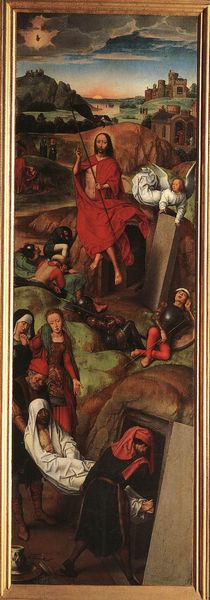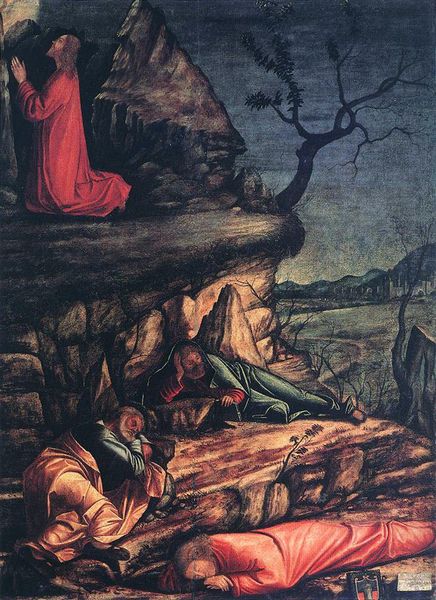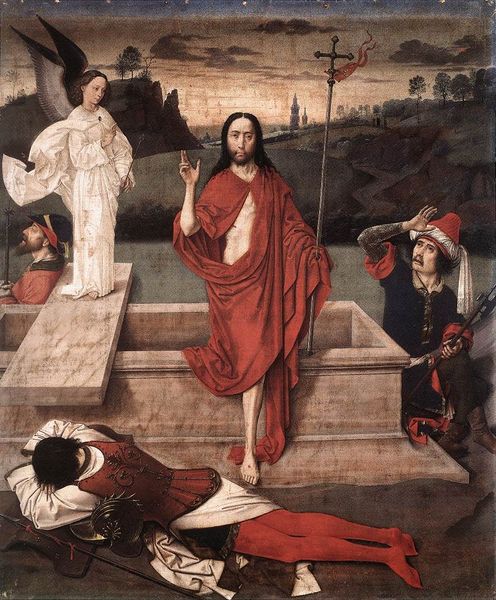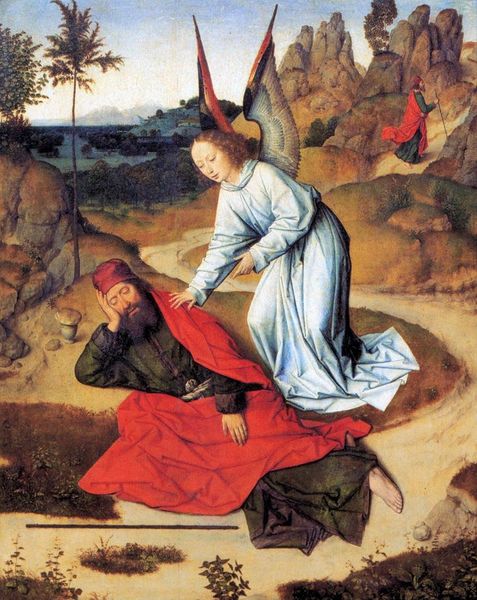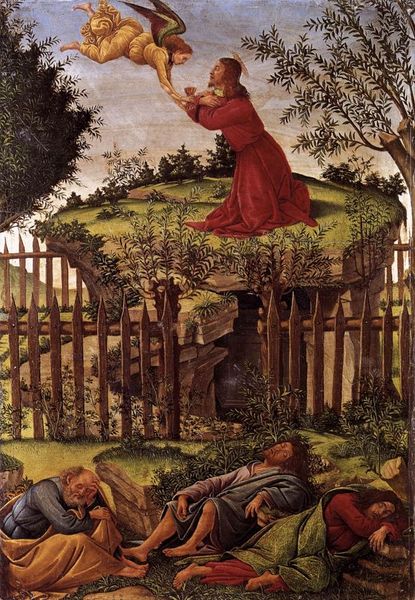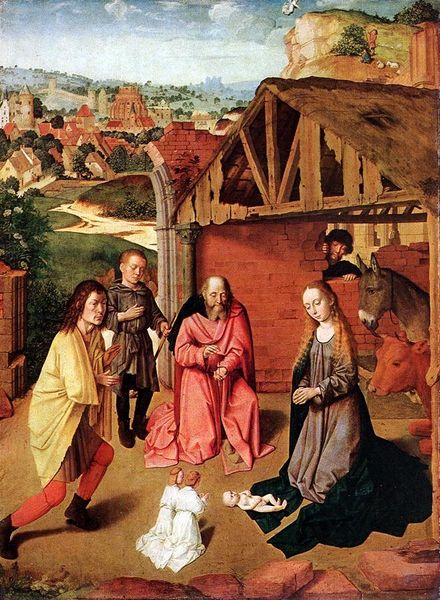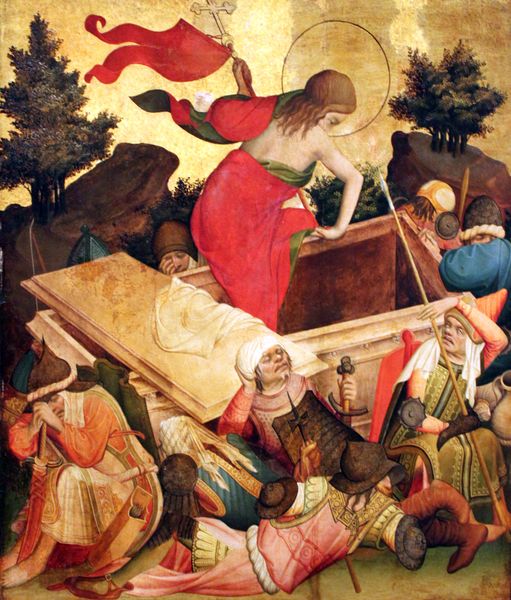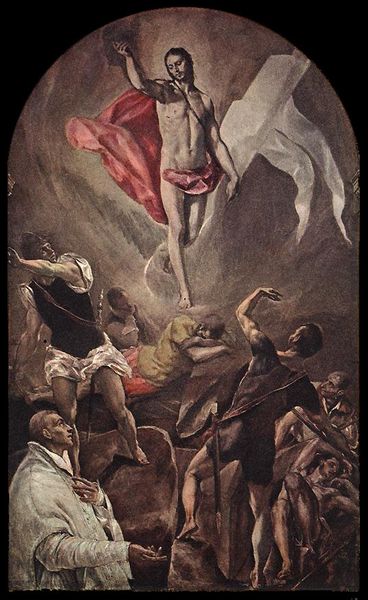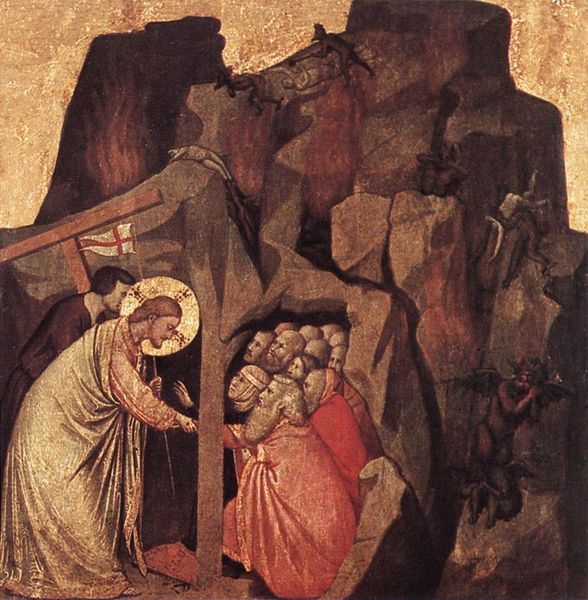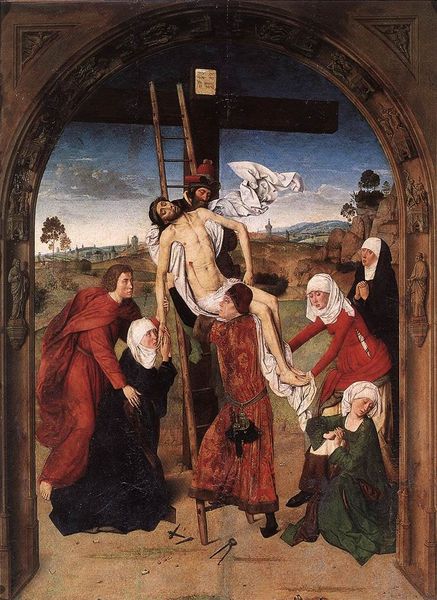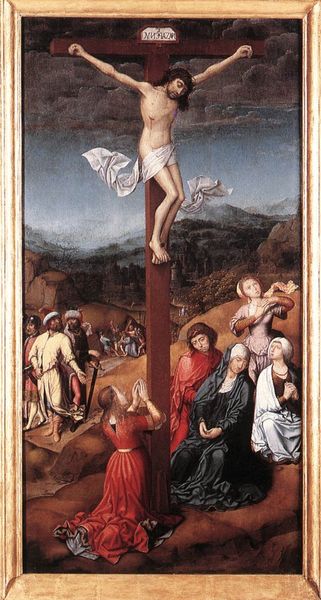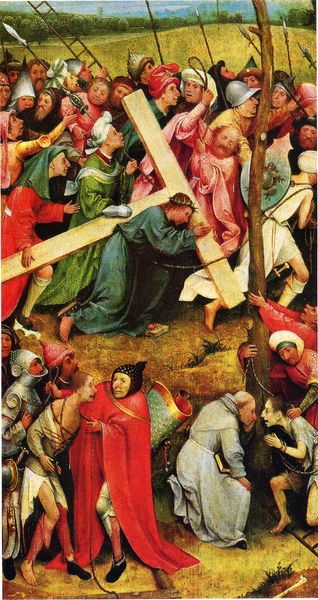
painting, oil-paint
#
painting
#
oil-paint
#
figuration
#
oil painting
#
history-painting
#
northern-renaissance
#
early-renaissance
#
realism
Dimensions: 58 x 28.2 cm
Copyright: Public domain
Curator: Before us, we have "Resurrection," an oil-on-panel painting attributed to Hans Memling, a prominent figure of the Early Renaissance and the Northern Renaissance movements. It resides here in the Budapest Museum of Fine Arts. Editor: My first impression? There's a fascinating juxtaposition between the ethereal and the mundane. Christ emerges with this incredible golden halo, yet the soldiers are rendered in such tangible, almost awkward poses. Curator: Indeed. Memling’s use of light creates a distinct visual hierarchy. Notice how the ethereal light emanating from Christ draws the eye upward, while the grounded figures of the soldiers provide a contrasting base. Consider also the detail afforded to each element: the meticulously crafted armor of the guards versus the more symbolic representation of Christ. It reflects a conscious ordering of pictorial space and theological importance. Editor: Absolutely, the detail in their armor does highlight their materiality. Were these specific designs, reflective of contemporary armor-making? This is oil paint we are talking about: what colors were used in the manufacturing of those outfits? How would have armor makers from that period responded to seeing themselves in paint? There's a tension between glorification and mundane task to render Christ. Curator: I agree there is tension in his depiction but to interpret, one might view the materials as metaphors. Christ, emerging from stone - traditionally viewed as material – as a kind of triumph over materiality. Notice too the geometric interplay. The angles of the tomb create diagonals that lead our eye to Christ, accentuating His vertical ascent and symbolic ascension. The structure of resurrection becomes, then, a kind of formalized signifier. Editor: And it makes you wonder how Memling viewed his own process! Painting Christ, the spiritual symbol of Christian European, requires mixing earthly pigment, grinding materials with human tools. The final painting here required skilled artisans for its creation. A holy image produced through such grounded processes is rather curious. Curator: I appreciate you bringing to our attention a reading that emphasizes production of art. However, from a more purely formalist angle, one sees this work as a synthesis of carefully balanced components that serves to evoke, above all else, a sense of awe and religious contemplation. Editor: An interesting reading and it makes one pause: that contemplation itself is rooted in an earthly act.
Comments
No comments
Be the first to comment and join the conversation on the ultimate creative platform.
